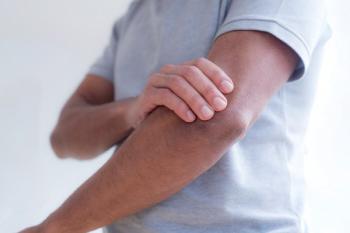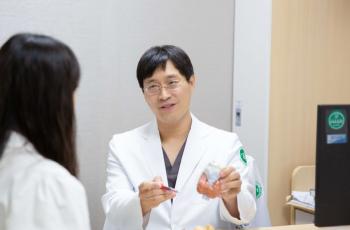Identify the mechanism of possible neural stem cell migration in the brain-damaged area...Expect to be used to treat intractable cerebral hemorrhage, etc
Jul 25, 2025
A research team led by Professor Jeon Jin-pyeong of Neurosurgery at Chuncheon Sacred Heart Hospital at Hallym University (corresponding author) announced that high-purity neural stem cells isolated from the brain can move to the brain-damaged area through vascular endothelial cells together with a research team led by Dr. Kim Jong-tae (first author, Hallym University's New Frontier Research Institute) and Professor Kang Sung-min at Sangmyung University.
Under the title of 'Advanced Hydrogel Mesh Platform with Natural Stem Cells and Human Environmental Regeneration for Enhanced Axonal Regeneration', the study was published in the international journal 'APL Bioengineering (APL Bioengineering, I.F.) 6.6)' as a'Featured Article'.
Neurostem cells in the brain are known to be the only cells that maintain homeostasis and regenerate tissues by differentiating into neurons, astrocytes, and oligodendrocytes in the event of damage.
Methods for regenerating nerves in areas of brain injury include activating intrinsic stem cells and transplanting cells from outside. However, because the clinical application of intrinsic cell activation is difficult because no clear treatment timing or mechanism has yet been established, the method of transplanting neural stem cells from outside is currently attracting attention as the most effective treatment method.
Professor Jeon Jin-pyeong's team conducted a study to reveal the mechanism of cell movement to the brain injury site using high-purity neural stem cells isolated from the brain of mice (mouse). The research team transplanted neural stem cells with hydrogels to traumatic brain injury mice and observed the course for four weeks. As a result, it was confirmed that neural stem cells expressing green fluorescent markers move to the damaged area and differentiate into neurons. This predicted that neural stem cells could be induced to the site of damage via specific mechanisms.
In addition, experiments using hydrogels made of fibrin and collagen confirmed that neural stem cells have excellent mobility and show similar mobility characteristics in environments similar to brain damage through interaction between vascular endothelial cells and microglia cells. It was also confirmed that neural stem cells have the ability to self-regulate the surrounding extracellular matrix (structures surrounding the cells) even in such an environment.
Based on these results, the research team analyzed that if high-purity neural stem cells and vascular endothelial cells are placed in a mesh-type hydrogel and delivered to the damaged area, it can have a practical effect on the recovery of nerve function by dissolving blood clots and promoting the regeneration of damaged blood vessels and axons. In addition, by attempting a technology to amplify and cultivate high-purity neural stem cells present in the brain in a three-dimensional culture method in vitro, it opened up the possibility of application to the treatment of refractory cerebral hemorrhage in the future. This is expected to be the basis for the development of new treatments.
Professor Jeon Jin-pyeong explained, "This study focused on the development of a mesh structure platform to maximize the therapeutic effect, noting that the effect of neurostem cell therapy using hydrogels depends on rapid blood vessel formation after transplantation. It is expected that it will continue to be developed into customized hydrogels using various stem cells and applied to treat various diseases such as refractory cerebral hemorrhage in the future."
This study was conducted with the support of the Korea Research Foundation's 'Artificial Intelligence Digital Health Platform for Cerebrovascular Disease Management (No. RS-2022-NR070859)' and 'Halim University Medical Center Might Hallym 4.0 Disease Conquest Project' with the funding of the Ministry of Science and ICT.
Under the title of 'Advanced Hydrogel Mesh Platform with Natural Stem Cells and Human Environmental Regeneration for Enhanced Axonal Regeneration', the study was published in the international journal 'APL Bioengineering (APL Bioengineering, I.F.) 6.6)' as a'Featured Article'.
Neurostem cells in the brain are known to be the only cells that maintain homeostasis and regenerate tissues by differentiating into neurons, astrocytes, and oligodendrocytes in the event of damage.
Methods for regenerating nerves in areas of brain injury include activating intrinsic stem cells and transplanting cells from outside. However, because the clinical application of intrinsic cell activation is difficult because no clear treatment timing or mechanism has yet been established, the method of transplanting neural stem cells from outside is currently attracting attention as the most effective treatment method.
Professor Jeon Jin-pyeong's team conducted a study to reveal the mechanism of cell movement to the brain injury site using high-purity neural stem cells isolated from the brain of mice (mouse). The research team transplanted neural stem cells with hydrogels to traumatic brain injury mice and observed the course for four weeks. As a result, it was confirmed that neural stem cells expressing green fluorescent markers move to the damaged area and differentiate into neurons. This predicted that neural stem cells could be induced to the site of damage via specific mechanisms.
In addition, experiments using hydrogels made of fibrin and collagen confirmed that neural stem cells have excellent mobility and show similar mobility characteristics in environments similar to brain damage through interaction between vascular endothelial cells and microglia cells. It was also confirmed that neural stem cells have the ability to self-regulate the surrounding extracellular matrix (structures surrounding the cells) even in such an environment.
Based on these results, the research team analyzed that if high-purity neural stem cells and vascular endothelial cells are placed in a mesh-type hydrogel and delivered to the damaged area, it can have a practical effect on the recovery of nerve function by dissolving blood clots and promoting the regeneration of damaged blood vessels and axons. In addition, by attempting a technology to amplify and cultivate high-purity neural stem cells present in the brain in a three-dimensional culture method in vitro, it opened up the possibility of application to the treatment of refractory cerebral hemorrhage in the future. This is expected to be the basis for the development of new treatments.
Professor Jeon Jin-pyeong explained, "This study focused on the development of a mesh structure platform to maximize the therapeutic effect, noting that the effect of neurostem cell therapy using hydrogels depends on rapid blood vessel formation after transplantation. It is expected that it will continue to be developed into customized hydrogels using various stem cells and applied to treat various diseases such as refractory cerebral hemorrhage in the future."
This study was conducted with the support of the Korea Research Foundation's 'Artificial Intelligence Digital Health Platform for Cerebrovascular Disease Management (No. RS-2022-NR070859)' and 'Halim University Medical Center Might Hallym 4.0 Disease Conquest Project' with the funding of the Ministry of Science and ICT.
|
This article was translated by Naver AI translator.














